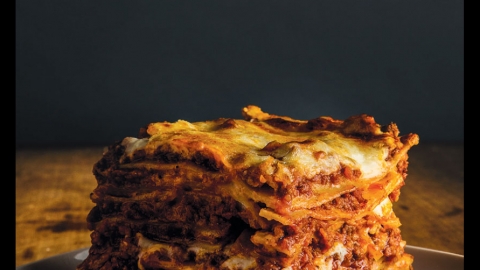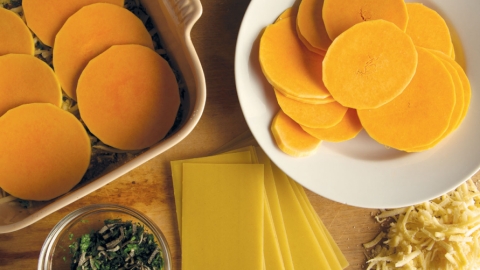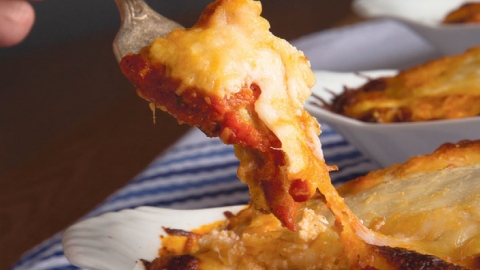Lasagne a Layered Affair
Lasagne or lasagna? Which is the correct spelling for this most ubiquitous of baked pasta dishes?
In Italy—where, of course, it originated—lasagne is simply the plural of lasagna. Either way, the term actually refers to the width of the wide, flat, sometimes-ruffled pasta used in making the dish—and either may refer to the dish itself. Lasagne may have originated in Italy, but it has become an incredibly popular dinner staple here in the States. As is the case with most Italian regional pasta dishes, there are as many versions as there are regions in Italy.
Traditionally, lasagne is made by layering lasagna noodles with some sort of sauce (tomato, meat or béchamel) and ricotta or mozzarella cheeses. However, when we checked Google today, there were over 22 million results for “lasagna” listing recipes for everything from classic meat sauce to eggplant and heirloom tomatoes.
Usually stacked and baked, the layers can be made from a myriad of sauces, from simple pesto to long-simmered Bolognese, and from fillings including delicate crab meat, rich ground beef, lamb or pork, or any vegetable imaginable. We are particularly fond of Nigella Lawson’s version, which includes ground beef, hard-boiled eggs, tomato passata (tomato sauce) and sliced cooked ham. Is it really lasagne? Technically, we suppose.
Looking for something a bit more traditional? Here we share what we think to be our ultimate version of lasagna Bolognese, with long-simmered meat sauce and rich béchamel alternating with toothsome noodles. Our meatless version is just as satisfying, subbing flavorful mushrooms for ground beef in the sauce, and butternut squash for some of the pasta layers. We also created a pasta-less adaptation, consisting of crumb-coated baked eggplant layered with tomato sauce and ricotta and mozzarella cheeses.
According to famed Italian food authority and cookbook author Marcella Hazan, “the only pasta suitable for lasagne is paper-thin dough freshly made at home.” This may most certainly be best, but we found that store-bought noodles (even the no-boil variety) suffice as nice time-savers, when a little more effort goes into crafting a high-quality sauce or using local and seasonal vegetables.
One important tip: If using store-bought noodles, err on the side of undercooking. They will be cooked again in the oven, and nobody wants mushy pasta. If you have the time and desire to make your own fresh pasta, visit EdibleTulsa.com for our favorite fresh pasta recipe and techniques.
While “comfort food” may be hard to define in a few words, for us a comfort food dish must absolutely contain three things: pasta, cheese and meat. Lasagna fits the bill every time, with rich meat sauce oozing from layers of tender pasta and gooey cheese.
All of us on the Edible Tulsa team make some form of lasagna several times throughout the fall and winter months, often dividing the recipe among two smaller casseroles, or making a double batch and freezing half for dinner on the fly later on during the cold season.








